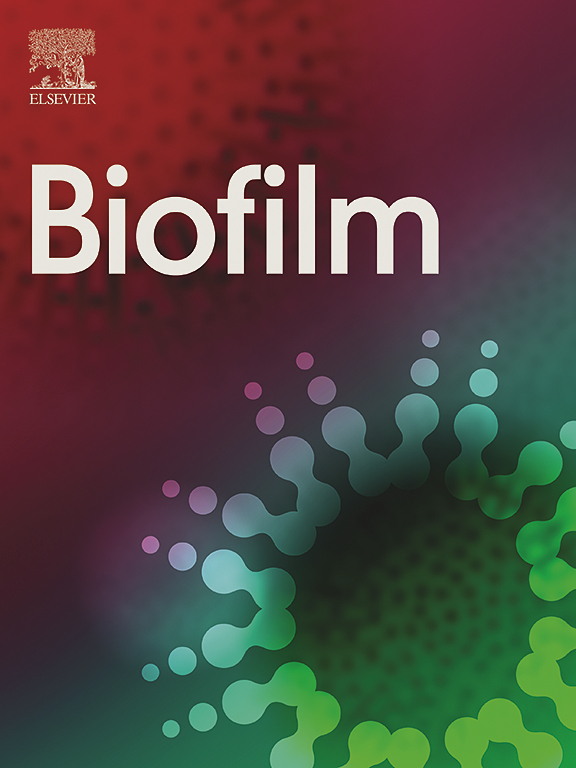Mitigating Candida albicans virulence by targeted relay of pulcherriminic acid during antagonistic biofilm formation by Bacillus subtilis
IF 4.9
Q1 MICROBIOLOGY
引用次数: 0
Abstract
The antagonistic biofilms formed by probiotic Bacilli may significantly mitigate persistent strains of Candida albicans, which are often involved in severe oral, vulvovaginal or systemic infections in humans. Here, we report on a spatiotemporal antagonistic activity mediated through pulcherriminic acid (PA) production by biofilm-forming B. subtilis, which is subsequently transported to the extracellular environment and binds ferric iron to form red-coloured pigment pulcherrimin. We show that the pulcherrimin building-up is targeted towards the C. albicans macrocolony via B. subtilis biofilm branching and successive PA relay. Furthermore, biofilm-forming B. subtilis cells demonstrate robust hyphal colonization that results subsequent eradication of C. albicans. Besides, extracted pulcherrimin mitigates C. albicans biofilm formation and yeast-to-hyphae (Y–H) transition. We further find that the mode of hyphal colonization could be regulated via SpoA-SinI pathway, while pulcherrimin relay is connected to surfactin production machinery. We assume therefore that the pulcherrimin relay for iron hijacking, in parallel to the direct hyphal colonization by biofilm-forming Bacilli, may provide a promising platform for developing therapeutic concepts to overcome antibiotic persistence in pathogenic yeasts.
在枯草芽孢杆菌拮抗生物膜形成过程中,通过靶向传递pulcherriminic酸来减轻白色念珠菌的毒力
由益生菌芽胞杆菌形成的拮抗生物膜可以显著减轻白色念珠菌的持续性菌株,这通常涉及人类严重的口腔、外阴阴道或全身感染。在这里,我们报道了一种时空拮抗活性,通过形成生物膜的枯草芽孢杆菌产生pulcherriminic acid (PA), PA随后被运输到细胞外环境并与铁结合形成红色色素pulcherrimin。我们表明,pulcherrimin的积累是通过枯草芽孢杆菌的生物膜分支和连续的PA接力针对白色念珠菌的大菌落。此外,形成生物膜的枯草芽孢杆菌细胞表现出强大的菌丝定植,结果随后根除白色念珠菌。此外,提取的pulcherrimin减缓白色念珠菌生物膜的形成和酵母到菌丝(Y-H)的转变。我们进一步发现菌丝定植方式可以通过SpoA-SinI途径调节,而pulcherrimin relay与surfactin生产机制有关。因此,我们认为,与形成生物膜的芽胞杆菌的直接菌丝定植平行,铁劫持的pulcherrimin接力可能为开发克服致病性酵母中抗生素持久性的治疗概念提供了一个有希望的平台。
本文章由计算机程序翻译,如有差异,请以英文原文为准。
求助全文
约1分钟内获得全文
求助全文

 求助内容:
求助内容: 应助结果提醒方式:
应助结果提醒方式:


